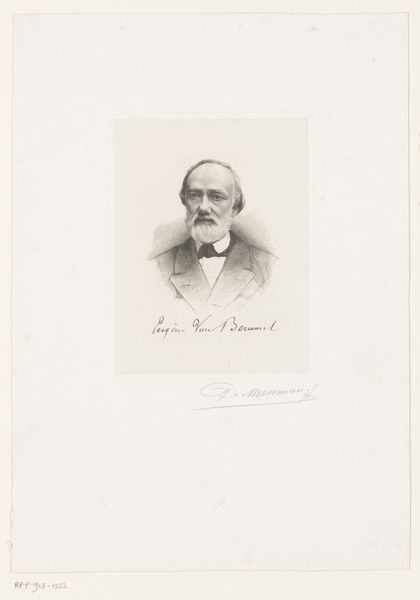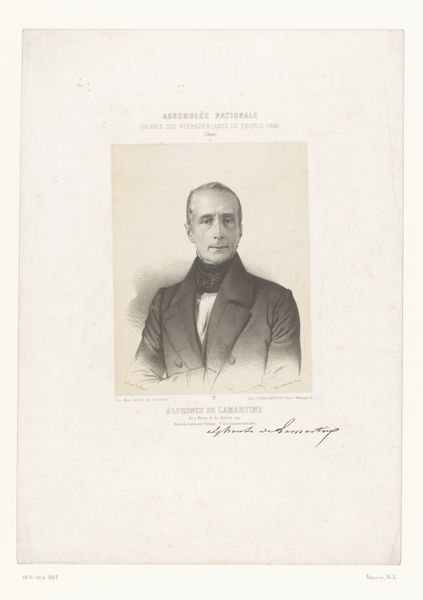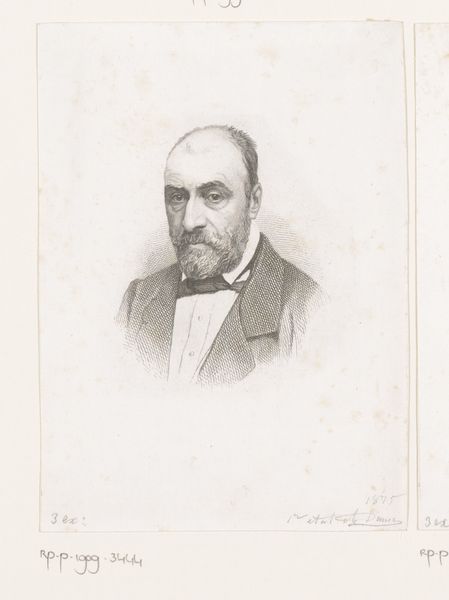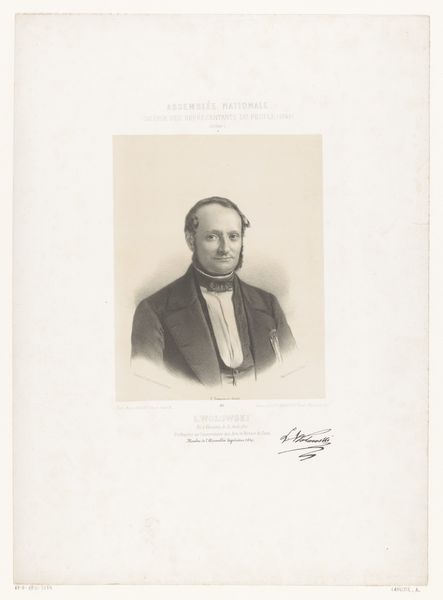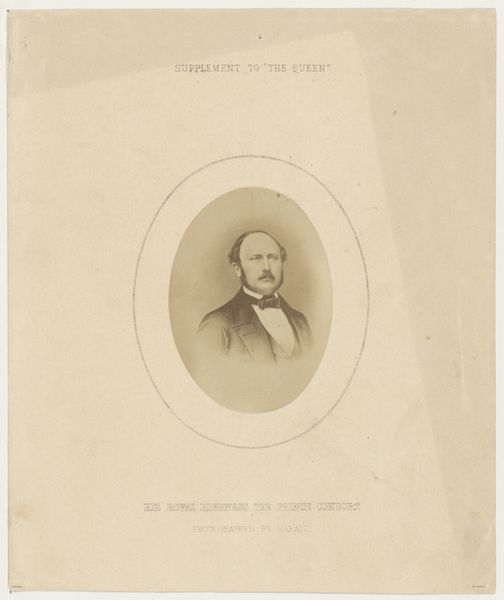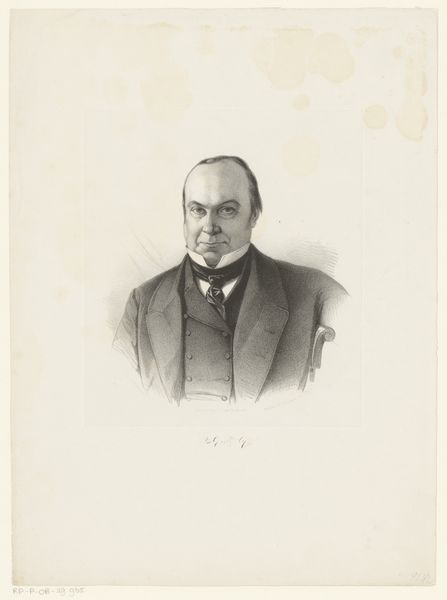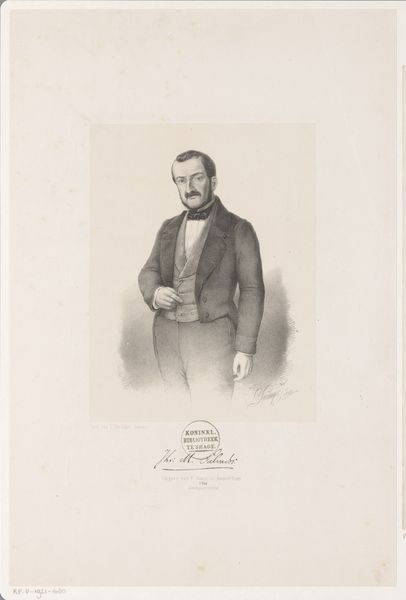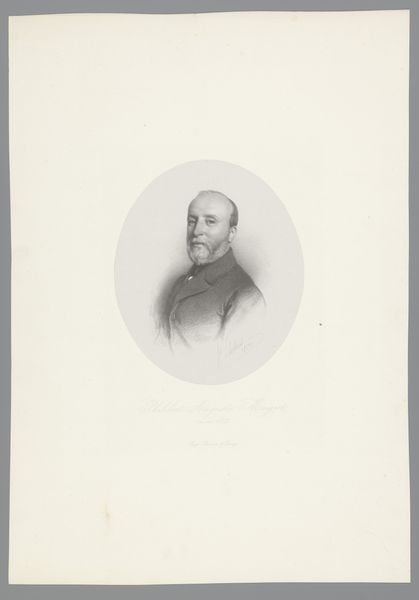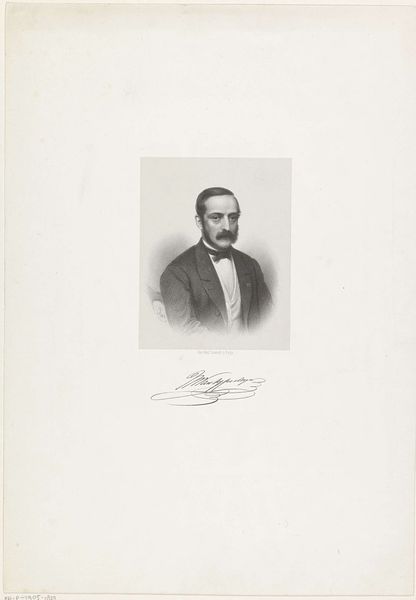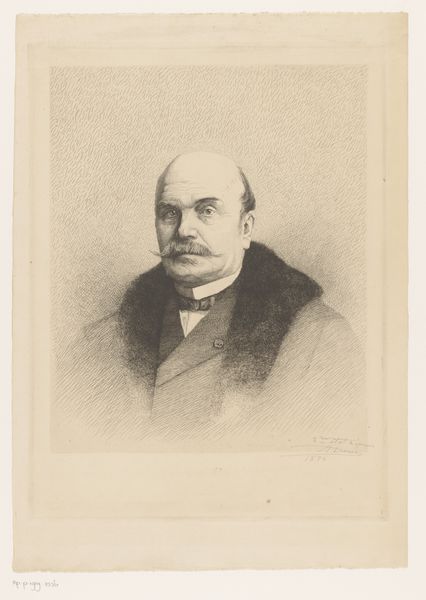
lithograph, print, photography
#
portrait
#
lithograph
# print
#
photography
#
academic-art
Dimensions: height 700 mm, width 524 mm
Copyright: Rijks Museum: Open Domain
Editor: Here we have a lithograph, a photographic print actually, titled *Portret van Julius Pieter Vuylsteke* made after 1887 by Florimond Van Loo. The portrait, in monochromatic shades, possesses a somber mood. How do you interpret this work? Curator: Beyond the formal portrait, what I see is a careful construction of bourgeois identity, prevalent in the late 19th century. The lithograph, functioning as a reproducible image, helped circulate and solidify certain societal norms. Who was Vuylsteke? What role did he play in shaping the social and political landscape of his time? Editor: From what I understand, he was a liberal politician, writer, and a strong advocate for the Flemish movement. Curator: Exactly. Now consider the power dynamics at play. This portrait, made using relatively new technologies of reproduction, helps to construct and disseminate the image of a powerful man actively engaged in shaping cultural identity and pushing for social reform, even within the bounds of the establishment. Doesn’t it prompt questions about whose voices are amplified and whose are silenced? Editor: That's a great point! So the image isn't just about him as an individual, but about the power structures of that time. It makes me think about how we memorialize people, and who gets remembered. Curator: Precisely. And how visual representation plays a crucial role in perpetuating specific narratives, consciously or unconsciously. It really encapsulates the intricate links between art, politics and society, doesn't it? Editor: Definitely gives me a lot to think about when viewing portraits now.
Comments
No comments
Be the first to comment and join the conversation on the ultimate creative platform.
